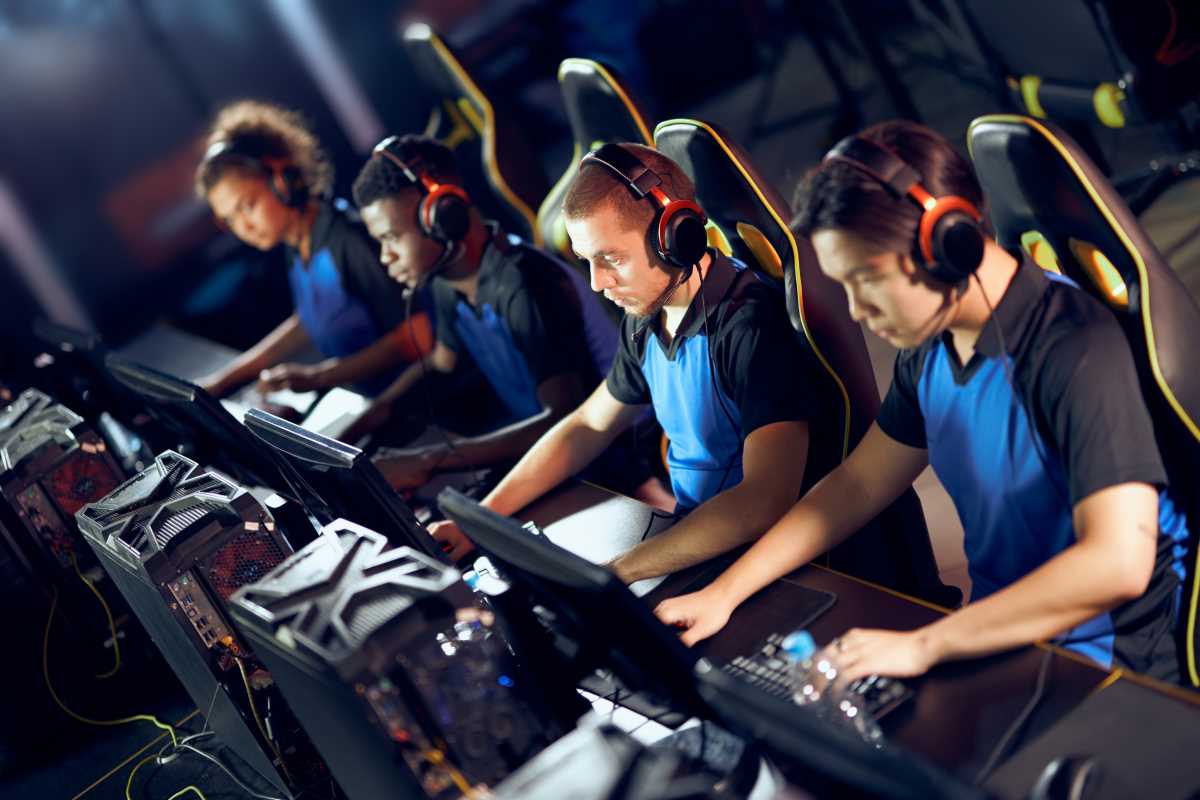Esports, or competitive gaming, isn’t just about having fun anymore. In 2025, it’s an industry that’s breaking records, connecting people across borders, and reshaping the way we approach gaming, sports, and even entertainment. Esports is carving out a lane all its own in the larger world of traditional sports. There are professional teams, massive tournaments with prize pools hitting millions, and a fanbase growing by the day. Whether you’re a casual player or aiming to go pro, you’re part of a dynamic world that’s redefining competition. But with all this growth, what does the current esports scene truly look like, and where is it heading?
A Truly Global Phenomenon
Esports has made the world smaller in the best way. With tournaments happening online or in sold-out arenas, anyone can participate or watch, no matter where they are. Games like Valorant, League of Legends, and CS2 (formerly Counter-Strike) have teams from every corner of the planet. For instance, you might see a team from Brazil face off with one from South Korea, and fans from Canada to South Africa can tune in live.
What makes esports special is the sense of connection it fosters. Platforms like Twitch and YouTube Gaming have upgraded their tools to include real-time translation, so even if a streamer or commentator speaks a different language, fans can still follow along. And new regions like Africa and the Middle East are making waves, hosting their own tournaments and bringing fresh talent into the scene. In years past, esports was dominated by a few key countries, but no longer. It's truly a global melting pot now.
Technology Fuels the Growth
The growth of esports wouldn’t be possible without tech. Innovations have made competitive gaming more accessible, immersive, and exciting. Speedier internet and cloud gaming services like Xbox Cloud Gaming and NVIDIA GeForce NOW mean you don’t need a costly gaming rig to participate. Anyone with a decent internet connection and a device can get in on the action.
Virtual reality (VR) and augmented reality (AR) are beginning to shape how we experience competitive gaming. Imagine slipping on a VR headset and stepping into a game world to watch a tournament unfold as if you were sitting in the crowd or even on the field. Developers are also introducing AI-powered matchmaking systems that ensure games are more balanced and fair.
Meanwhile, esports broadcasting platforms like Twitch have gotten smarter. They now allow viewers to predict game outcomes for rewards or customize camera angles during matches. YouTube Gaming, too, delivers broadcasts in ultra-high-definition for a premium watching experience, ensuring fans always get the best view of the action.
Big Leagues and Bigger Dreams
Professional leagues are a mainstay of entertainment. Major events like The International for Dota 2 and the League of Legends World Championship are drawing millions of viewers. For example, the League of Legends 2025 World Championship amazed audiences with peak viewership topping 6.5 million concurrent viewers.
Unfortunately, not every league is growing equally. Some titles, such as Rocket League’s RLCS Major, have recorded declining viewership, with the Birmingham 2025 event garnering a peak of 287,987 viewers compared to higher numbers from earlier years. This highlights the challenges of keeping esports fresh and engaging in an increasingly competitive entertainment space.
Prize pools remain impressive but haven’t shattered past records. The International 2025 maintained a strong $30 million prize pool, solidifying its status as one of the most lucrative esports tournaments. Meanwhile, games like Valorant and Fortnite are feeding into the competitive frenzy with multi-million-dollar stakes for their events, offering plenty of opportunities for aspiring pros to cash in on their skills.
Education and Career Pathways
Another exciting development is the role of esports in education. As of 2025, many universities and colleges worldwide offer esports scholarships. These programs allow talented players to compete at a high level while earning their degrees. Dedicated esports training facilities on campuses are becoming the norm, helping players improve their skills in a professional environment.
It’s not just about playing games, though. Esports programs also prepare students for careers in areas like game design, team management, content creation, and even event production. High schools are also jumping on the bandwagon, creating esports clubs and fostering a competitive spirit among younger gamers.
The result? A thriving industry in which gamers can grow both professionally and personally, opening doors to a multitude of careers.
Fans Keep the Flame Alive
Esports relies heavily on its passionate fanbase, and 2025 has taken fan involvement to a new level. Thanks to tools like Discord, fans can come together to discuss strategies, share memes, or cheer for their favorite teams during watch parties. Players and teams also maintain direct interaction with fans, replying to comments or livestreaming their practices, which keeps the community vibe strong.
Another thing that sets esports apart is its variety. Unlike traditional sports, which are limited to specific formats, esports spreads across genres. From strategy-based MOBAs like League of Legends to fast-paced shooters like Call of Duty, there’s something for everyone. This diversity keeps fans engaged and continually brings new ones into the fold.
Challenges and Opportunities
Despite its astronomical growth, esports faces hurdles. Accessibility remains a problem as many players worldwide still lack the hardware or internet connection needed to compete at high levels. Cloud gaming is helping bridge this gap, but it’s not a complete solution yet.
Burnout is another issue, with pro players often working on grueling schedules. Thankfully, wellness programs are now standard among top-tier teams. Coaches, nutritionists, and mental health professionals are part of many team lineups, aiming to ensure players’ well-being alongside their performance.
Meanwhile, organizations like the Esports Integrity Commission (ESIC) continue working hard to combat cheating and match-fixing, ensuring the competitive scene stays credible.
The future of esports looks bright. By the end of 2025, the global market is forecast to hit $1.87 billion, driven by sponsorships, media rights, and an insatiable fanbase. Technologies like AR and AI will further enhance both playing and viewing experiences, making competitive gaming bigger and more immersive than ever.
Esports is a cultural revolution disrupting entertainment, education, and sports worldwide. The world of esports in 2025 has something for everyone. And the best part is that the action is far from over. This is just the beginning of what’s next.
 (Image via
(Image via
.jpeg)




